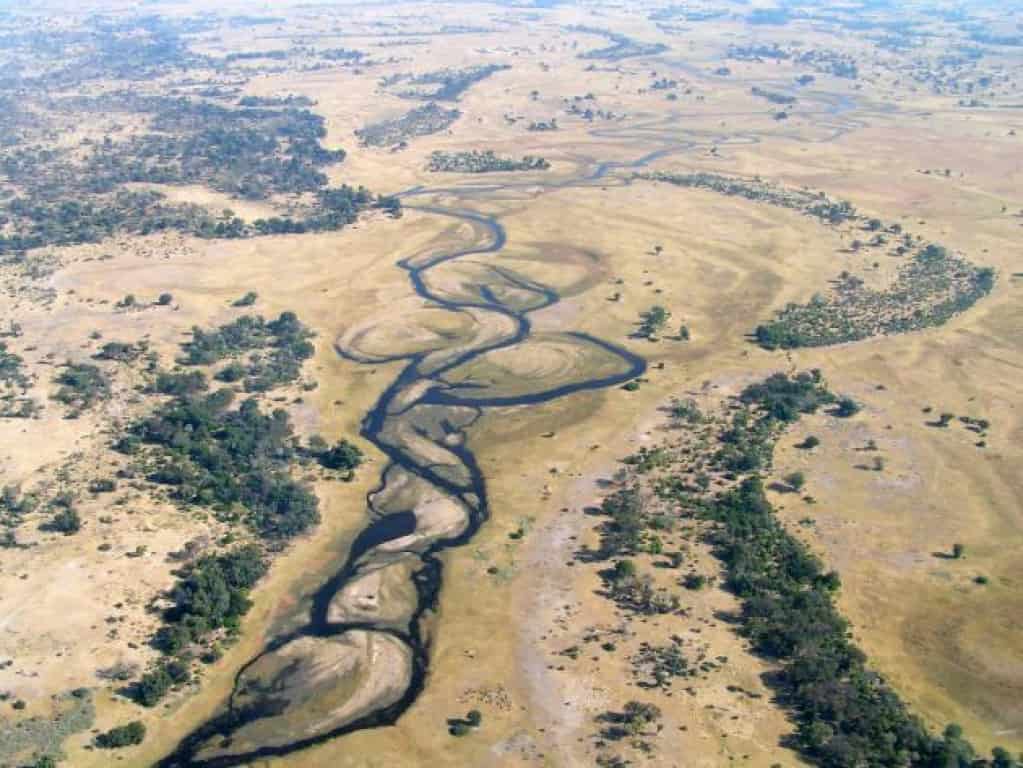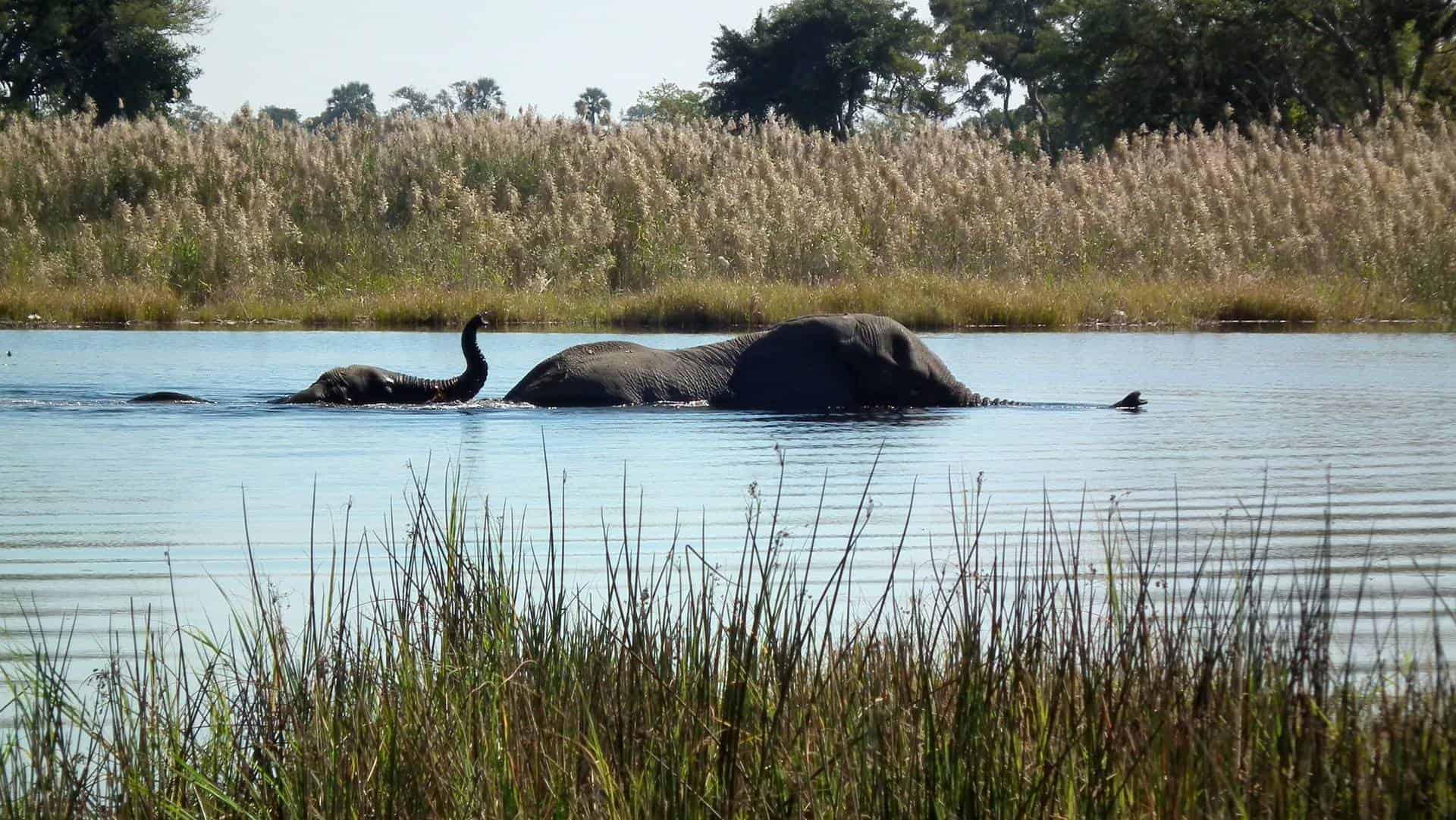Deep in the southeast of Africa with its borders touching those of South Africa, Zambia and Zimbabwe lies a wonderful expanse of open country, whose sheer size awes most wildlife enthusiasts.
There are many different kinds of Botswana landscapes.
Botswana stretches for thousands of kilometers, boasting over 100,000 sq km of protected land, an ideal destination for those who are looking for a genuine wilderness experience.
With its twelve National Parks and Reserves this country is home to a large number of game and other forms of wildlife. While venturing through Botswana you will experience the enchanting charm of its pristine wilderness and the thrill of herds of animals stampeding along the dusty migration routes or resting at the water reservoirs, dams and rivers.
It is true that due to the sheer size of the country and the continual migration of the animals it can at times be tricky to spot wildlife. However, this too is the beauty of Botswana, it still retains much of its genuine African nature and the National Parks offer wide expanses in which the wildlife can move freely and follow the natural life cycle without being disturbed by Man.
Botswana landscapes: The four main areas of Botswana
Botswana is divided into four main areas, the Kalahari Desert, the Okavango Delta Swamps, the Tsodilo Hills and the Kanyu Flats, so if pressed for time you might want to concentrate exclusively on one of these areas. Each having their own unique version of the Botswana landscapes.
The Kalahari Desert or Kgalagadi
The Kalahari Desert stretches out through nearly two-thirds of the country and covers the land with sand and sparse vegetation. Under its high sand dunes lies a remarkable system of river beds, pans and depressions worth exploring for those fascinated with geological phenomena. Here you can spot plenty of wildlife species including springbok, gemsbok, wildebeest, giraffe, eland and ostrich as well as big game.
Traveling through the Kalahari and camping at the various camping sites that are scattered throughout the desert provides the ultimate wilderness experience rivaled by no other place in the world. This expanse is home to an amazing variety of wildlife species, and also to geologically interesting sites. Spending a night under the starry skies of the Kalahari is an unforgettable experience in by itself.
The Tsodilo Hills
Tsodilo Hills is situated in the northwest of the country, within the limits of the Kalahari is an incredibly fascinating site for all those interested in African history and culture as well as an excellent hiking experience. Here more than 4,500 ancient San paintings inspired by religious and spiritual beliefs can be admired on the rocks scattered in the area. This location is a UNESCO World Heritage Site and it offers adventurous hiking paths throughout its impressive peaks.
The Okavango Delta Swamps
The Okavango Delta Swamps are Botswana’s main tourist attraction due to its numerous areas of natural interest. This vibrant wetland of islands and channels boasts an enormous variety of wildlife with the Okavango River, the seventh largest river in Africa running through its middle. This delta is probably one of the most fascinating sites in Africa, with more than 15,000 sq km of waterways and swamps. The Okavango River overflows each year after heavy rainfall in Angola thus forming the Okavango Swamps as the river flows into Botswana.
When we think of swamps we tend to imagine muddy and murky waters. Well this is not the case with the Okavango swamps where the waters are so clear you would think you are swimming in the Caribbean Sea. This wetland haven harbors a wide variety of wildlife species and is the home to the Moremi Game Reserve, a large protected drier area within the swampland where you can spot the big five, as the game is concentrated in a smaller area. The Okavango visitors can come in close contact with wildlife and admire the beauty of its channels, untainted landscapes and unforgettable sunsets. There are no big hotels in the area, only small camping sites and one or two excellent safari lodges, with the obvious objective of preserving the natural environment and beauty of the area.

The Chobe National Park
The Chobe National Park is the second largest park in Botswana and is known for its high density of wildlife and game. The Chobe River attracts all bigger game, especially from September to March, such as lion, antelope, hippo, crocodiles, and herds of buffalo as well as the largest number of elephants in Africa.
The Kanyu Flat
The Kanyu Flat is also an interesting site to visit. Situated between the Makgadikgadi Pan Game Reserve and the Nzai Pan National Park, this system of small salt pans offers amazing bird watching and viewing of other small and rare wildlife species.
The dry season in Botswana extends from April to November and the wet season is from November to March, this is when you can enjoy spotting the bird migration and an incredible array of colorful butterflies and flowers.
Lodges and camp sites are open all year round throughout the parks and Nature Reserves.
To experience all of the Botswana landscapes, we recommend hopping between a few areas on your Botswana safari.













